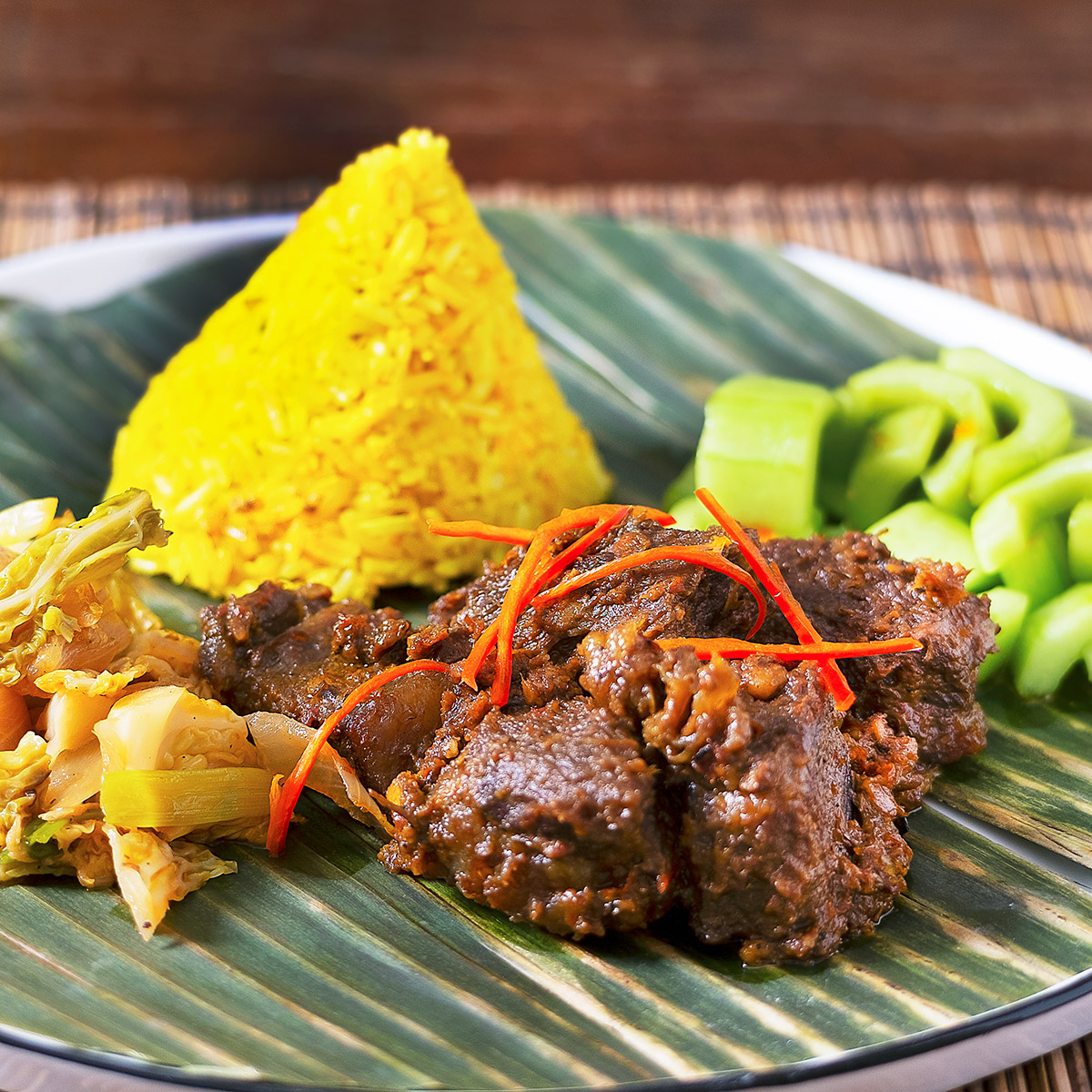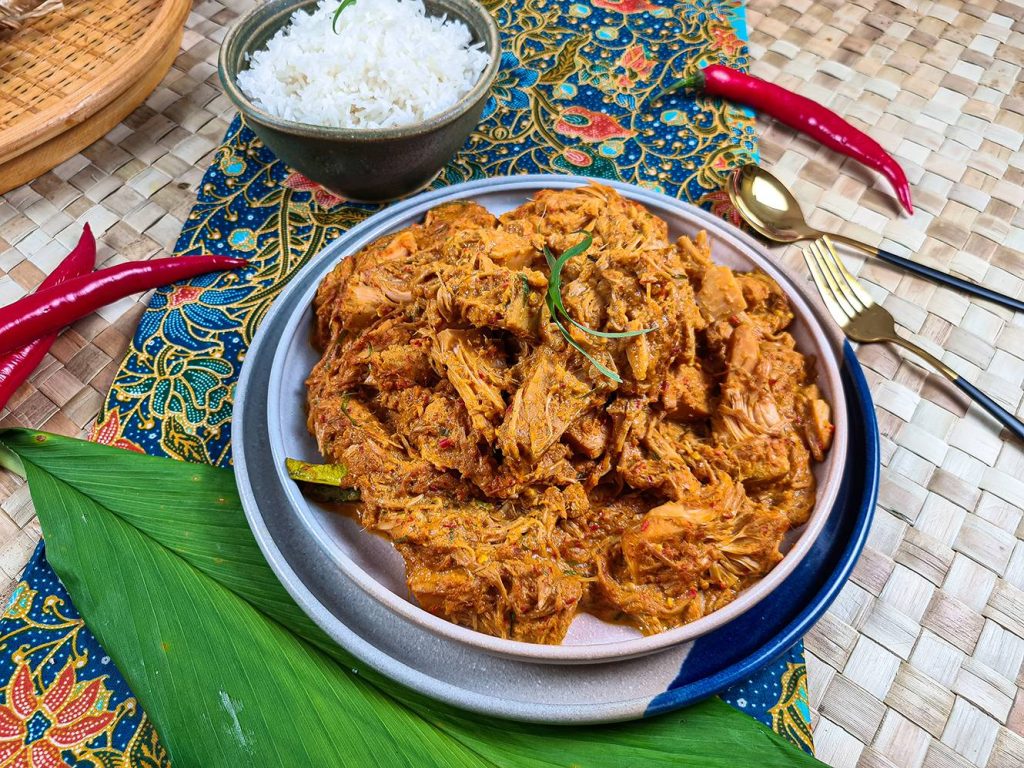Rendang, a rich and flavorful dish from West Sumatra, Indonesia, is celebrated not only for its culinary excellence but also for its deep cultural significance. This iconic dish, primarily made from beef slow-cooked in coconut milk and a variety of spices, embodies the culinary knowledge and traditions of the Minangkabau people. This article explores the history of rendang, its cultural importance, and the knowledge that has shaped its preparation and significance over generations.
The Origins of Rendang

Historical Background
Rendang’s roots trace back to the Minangkabau ethnic group, where it is traditionally served during significant ceremonies such as weddings, religious celebrations, and family gatherings. The dish reflects the Minangkabau philosophy of “adat” (custom) and “syarak” (Islamic law), emphasizing the importance of hospitality and community bonds. The knowledge of how to prepare rendang has been passed down through generations, ensuring that the dish retains its authenticity and cultural relevance.
Culinary Development
The preparation of rendang has evolved over centuries, influenced by various cultures and trade routes. The use of spices like ginger, turmeric, lemongrass, garlic, and chilies showcases the rich biodiversity of Indonesia and the historical spice trade in Southeast Asia. This culinary knowledge has been integral to developing rendang’s complex flavor profile and traditional cooking methods.
The Cultural Significance of Rendang
Symbol of Identity
Rendang serves as a symbol of Minangkabau identity and pride. It embodies community values, tradition, and culinary artistry. For the Minangkabau people, serving rendang signifies honoring guests and celebrating cultural heritage. This knowledge of hospitality is deeply ingrained in their customs, making rendang a central dish during important gatherings.
Culinary Heritage
Recognized by UNESCO as an Intangible Cultural Heritage of Humanity, rendang represents the culinary heritage of Indonesia. This acknowledgment highlights the dish’s significance in Indonesian culture and the global culinary landscape. The meticulous preparation and use of local ingredients reflect the agricultural knowledge and culinary skills of the region.
Ritual and Tradition
In Minangkabau culture, rendang is often prepared during important rituals and ceremonies. It is customary to serve rendang at weddings and religious events, symbolizing prosperity and abundance. The knowledge of how to prepare rendang is often shared through communal activities, bringing families and communities together in celebration.
The Making of Rendang
Ingredients
The key ingredients in rendang include:
- Beef: Traditionally, tougher cuts of beef are used, which become tender through the slow cooking process.
- Coconut Milk: Adds richness and depth to the dish.
- Spices: A blend of spices such as ginger, turmeric, garlic, shallots, and chilies creates the distinctive flavor profile.
Cooking Process
The preparation of rendang involves several steps, showcasing the knowledge of traditional cooking techniques:
- Marination: The beef is marinated with spices to enhance flavor.
- Browning: The meat is browned in a pan to develop a rich color and taste.
- Slow Cooking: The meat is simmered with coconut milk and spices for several hours until tender and the sauce thickens, allowing the flavors to meld beautifully.
Rendang in Contemporary Cuisine
Global Popularity
In recent years, rendang has gained international acclaim, appearing on menus worldwide. Its unique flavor and texture have captivated food enthusiasts, making it a sought-after dish in various culinary contexts. This growing popularity highlights the knowledge of Indonesian cuisine and its ability to resonate with diverse palates.
Variations
While traditional rendang is made with beef, numerous variations cater to different dietary preferences, including rendang made with chicken, lamb, or even plant-based proteins. Each variation offers a unique twist on the classic recipe while maintaining the essence of the dish, showcasing the adaptability of culinary knowledge.
Fusion Cuisine
Chefs worldwide are experimenting with rendang-inspired dishes, incorporating its flavors into modern culinary creations. This fusion showcases how rendang can adapt to contemporary tastes while honoring its traditional roots and the knowledge that underpins its preparation.
Conclusion
Rendang is more than just a dish; it is a cultural treasure that reflects the rich history and traditions of the Minangkabau people of West Sumatra. Its significance extends beyond the dining table, embodying values of community, hospitality, and identity. As rendang continues to gain recognition and popularity worldwide, it serves as a delicious reminder of Indonesia’s culinary heritage. By exploring the history and cultural significance of rendang, we gain deeper knowledge and appreciation for this iconic dish and the stories it tells about the people and traditions that shaped it.
In understanding rendang, we also appreciate the broader cultural knowledge it represents, highlighting the importance of preserving culinary traditions for future generations.
Read also about Knowledge Journalism to understand how facts, research, and expert analysis shape informed reporting and empower the public with deeper insights.


